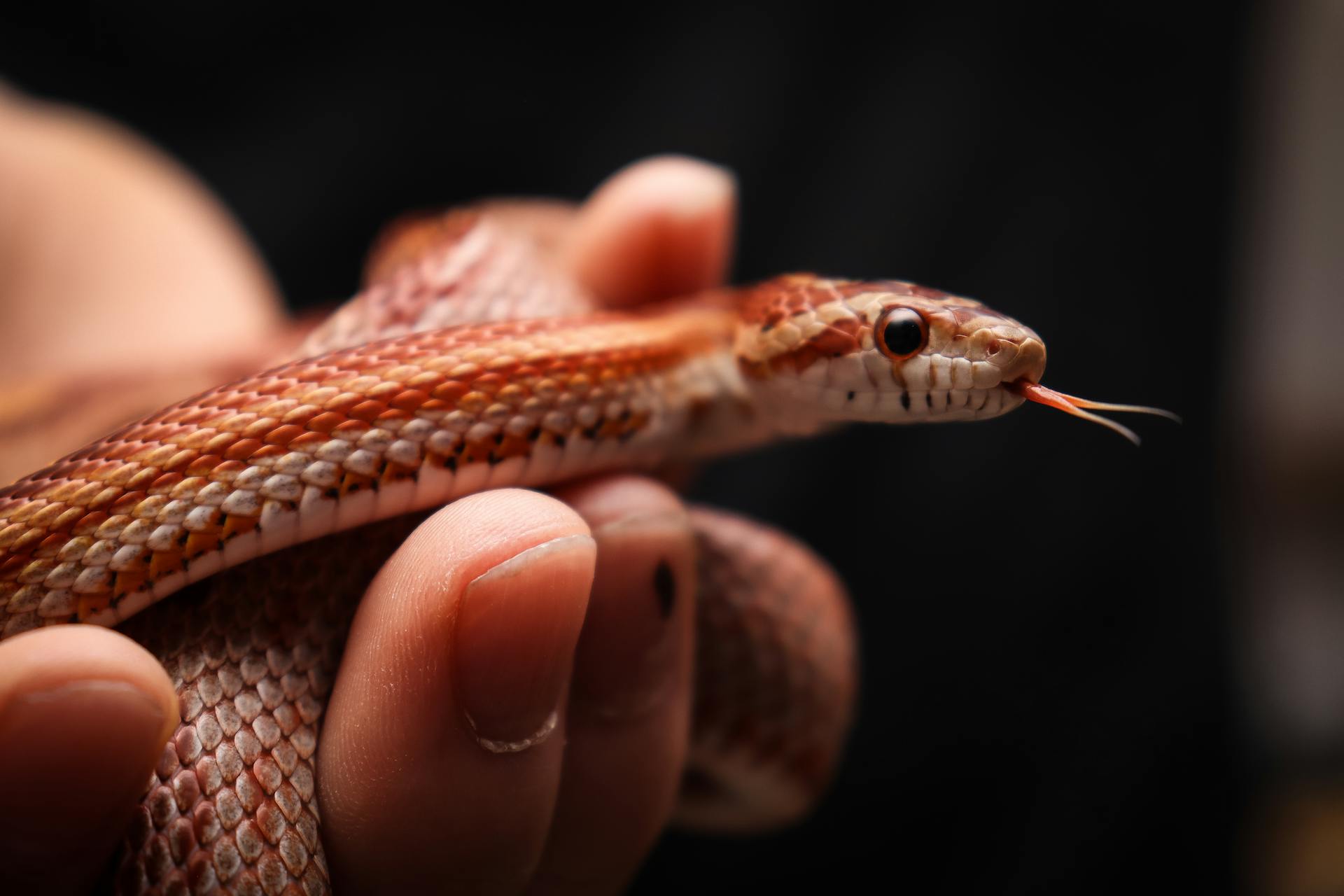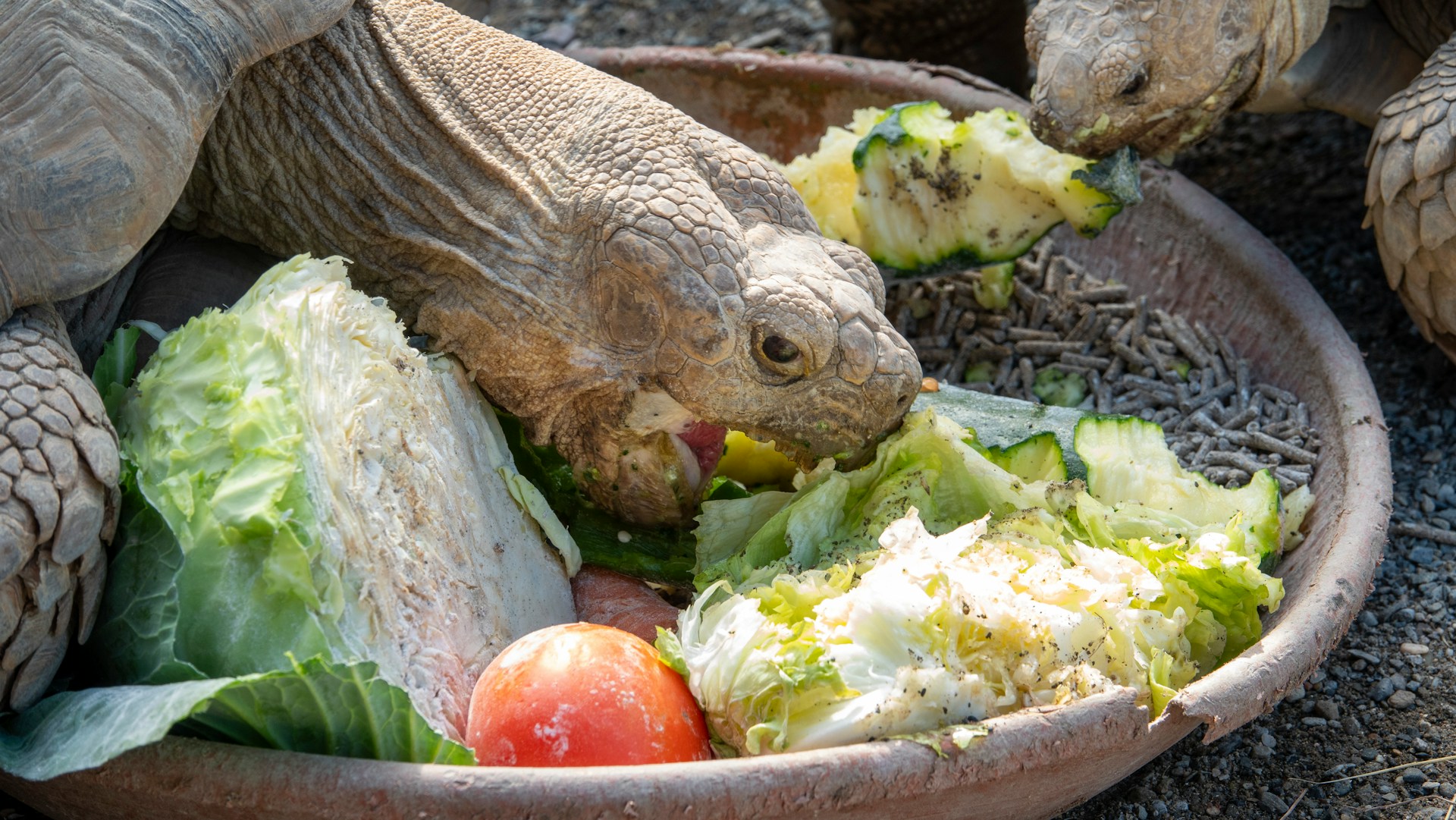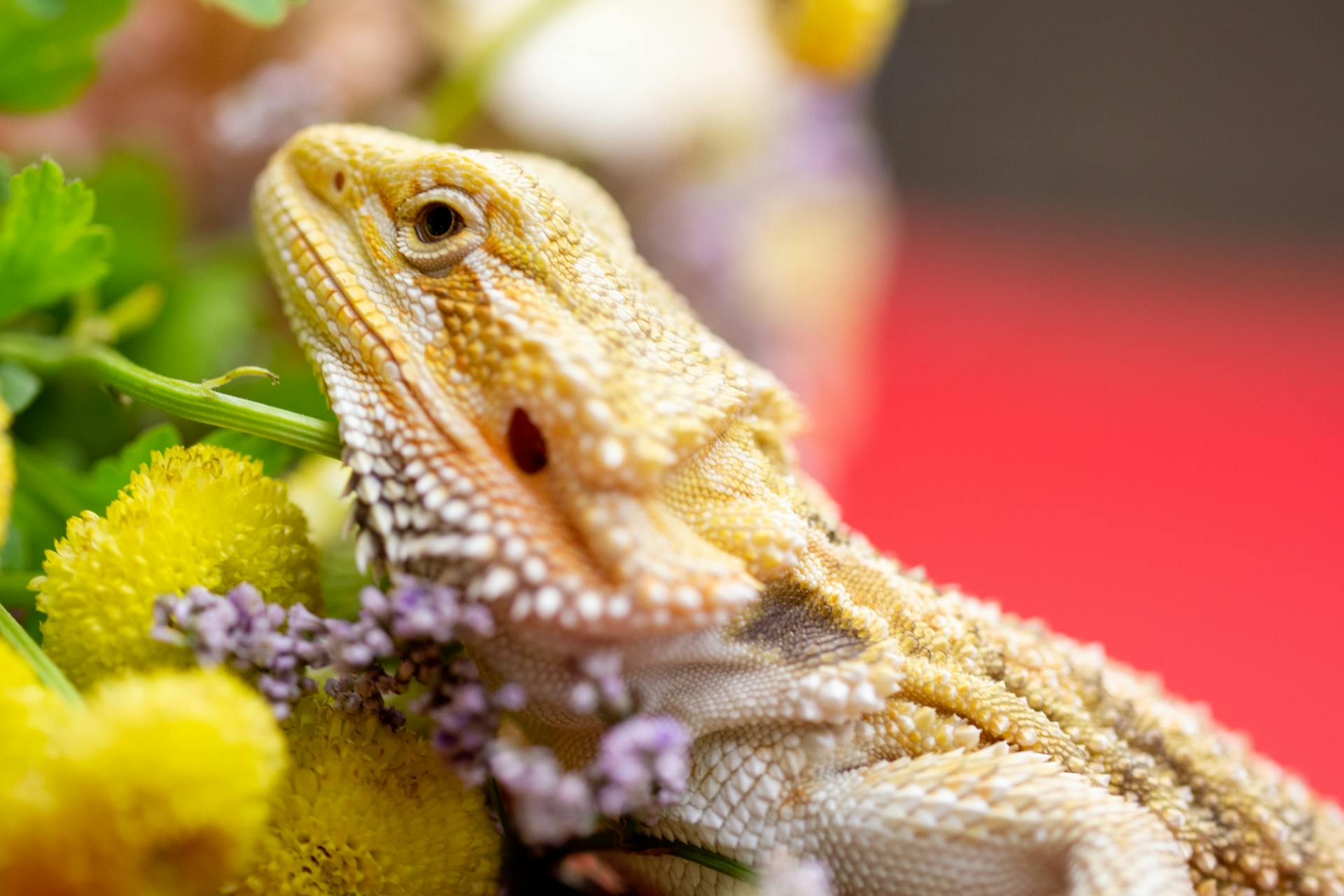Corn snakes, with their vibrant colors and docile temperaments, have become one of the most popular pet reptiles in homes across America. These beautiful constrictors, native to the southeastern United States, are relatively easy to care for, making them ideal for both beginners and experienced reptile enthusiasts.
However, like all reptiles, corn snakes have specific habitat requirements that must be met to ensure they thrive in captivity.
Creating the perfect environment involves understanding their natural habitat and replicating those conditions as closely as possible in your home.
This comprehensive guide will walk you through everything you need to know about setting up and maintaining the ideal corn snake habitat, from selecting the right enclosure to managing temperature and humidity levels.
Understanding Corn Snake Natural Habitat
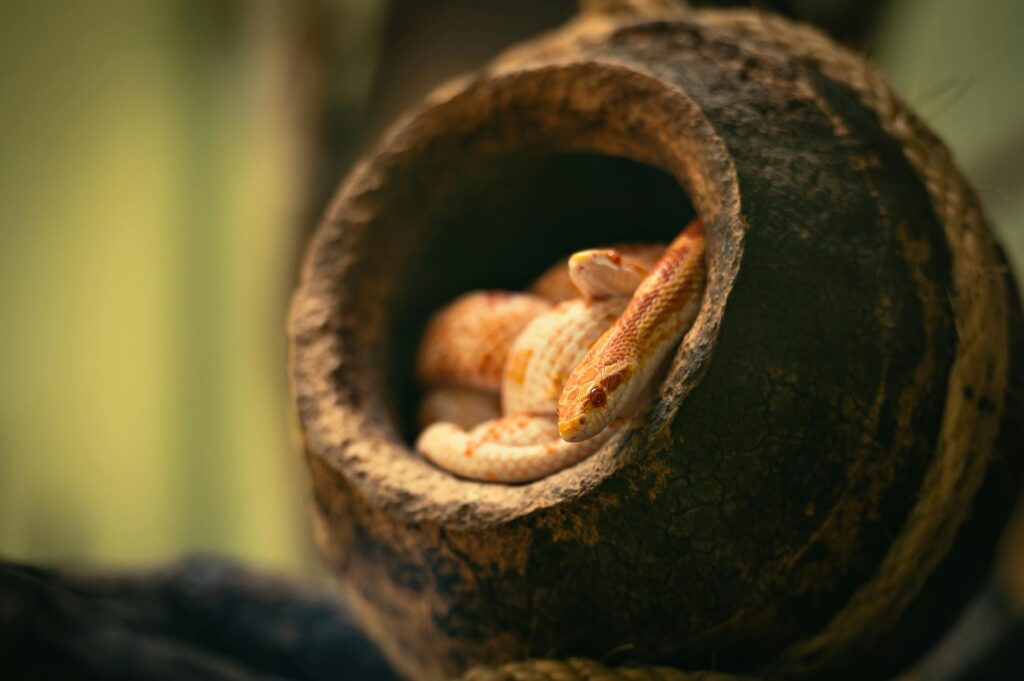
In the wild, corn snakes inhabit a variety of environments throughout the southeastern United States, from the pine forests of Florida to the rocky hillsides of Kentucky.
These adaptable reptiles can be found in woodland edges, abandoned buildings, rocky hillsides, and even farmlands where rodent populations are abundant.
They spend much of their time hiding under logs, rocks, or in abandoned rodent burrows, emerging primarily at dawn and dusk to hunt. Understanding these natural preferences helps inform the creation of a captive habitat that allows for natural behaviors like climbing, burrowing, and thermoregulating.
Wild corn snakes experience seasonal temperature fluctuations, which influence their feeding, shedding, and breeding cycles – aspects that should be considered when creating an artificial environment.
Selecting the Right Enclosure Size
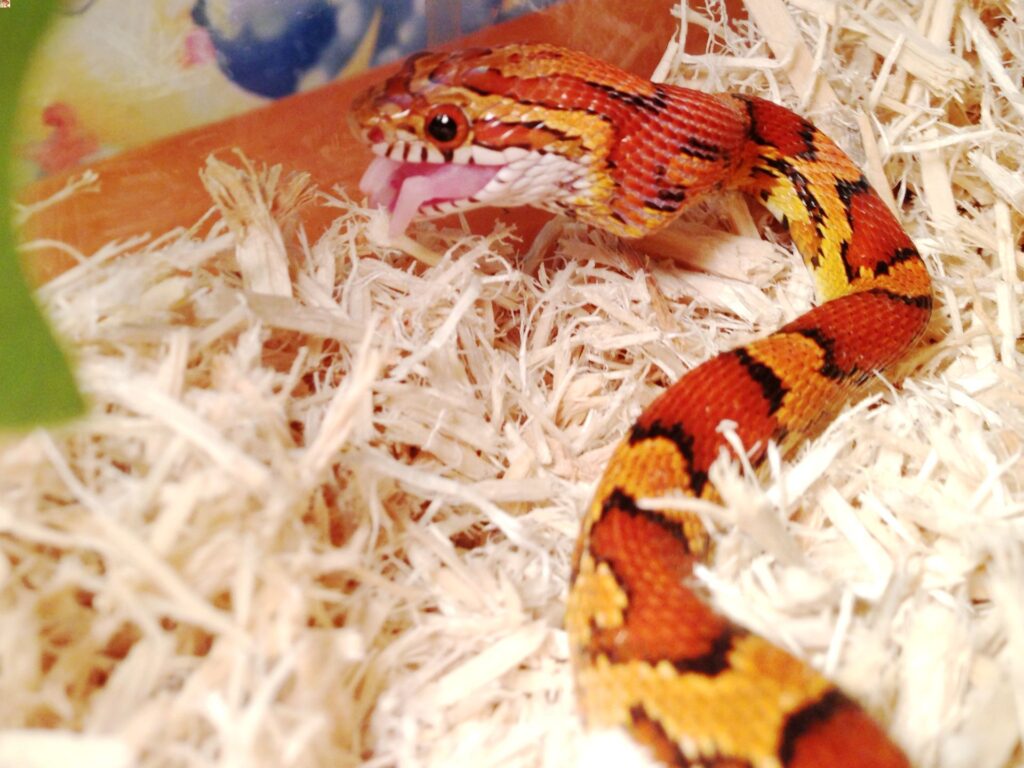
For corn snakes, enclosure size should be proportional to their length, with the general rule being that the combined length and width should equal or exceed the snake’s length.
For adult corn snakes, which typically reach 4-5 feet, a 40-gallon terrarium or similar-sized enclosure (approximately 36″ x 18″ x 18″) provides adequate space for movement and exploration.
Hatchlings and juveniles can be housed in smaller enclosures, such as 10-20 gallon tanks, to help them feel secure and find their food easily.
When selecting an enclosure, remember that corn snakes are skilled escape artists, so secure lids or doors are essential – they can push through loose-fitting lids and squeeze through surprisingly small gaps.
Glass terrariums, plastic reptile enclosures, and professionally made wooden vivariums are all suitable options, each with their own advantages regarding heat retention, visibility, and aesthetics.
Enclosure Types and Materials
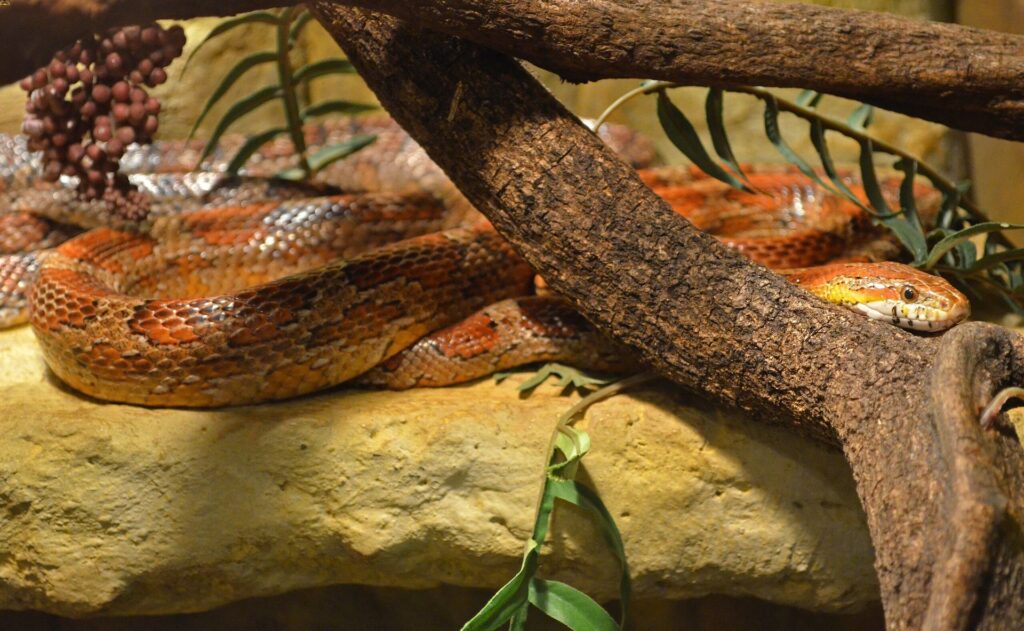
The market offers several types of enclosures suitable for corn snakes, each with distinct advantages. Glass terrariums provide excellent visibility and maintain humidity well, though they can be heavier and may not retain heat as efficiently as other options.
Plastic reptile enclosures, such as those made by manufacturers like Vision or Freedom Breeder, are lightweight, retain heat effectively, and often feature convenient front-opening doors that create less stress for your snake during maintenance.
Wooden vivariums offer superior insulation properties and can be customized to fit specific spaces in your home, though they require proper sealing to prevent moisture damage.
For budget-conscious keepers, modified plastic storage containers with proper ventilation can serve as temporary or even permanent housing, though they sacrifice visibility.
Regardless of the material chosen, ensure the enclosure allows for proper ventilation while maintaining appropriate temperature and humidity levels.
Substrate Options and Bedding
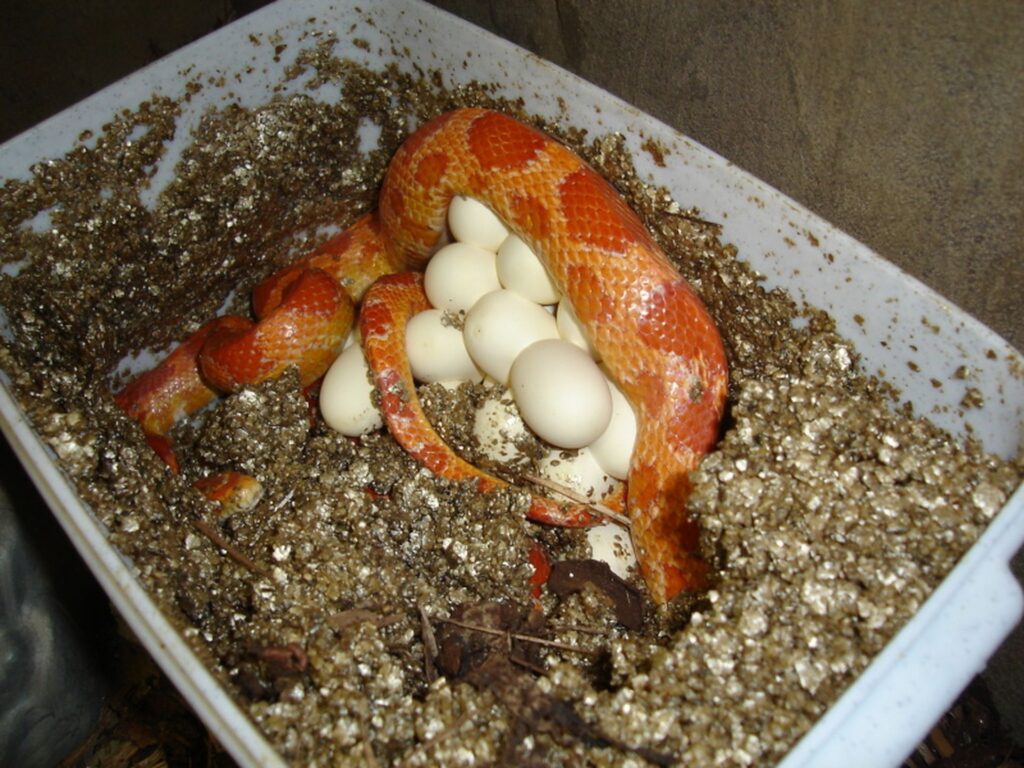
The substrate forms the foundation of your corn snake’s habitat and serves multiple purposes: providing burrowing opportunities, helping maintain humidity, and creating an aesthetically pleasing environment.
Aspen shavings are among the most popular substrates for corn snakes as they’re affordable, absorbent, and allow for natural burrowing behavior without raising humidity levels too high.
Cypress mulch and coconut husk products like Reptibark or Zoo Med’s Forest Floor provide excellent moisture retention for snakes needing slightly higher humidity, particularly during shedding periods.
Paper-based products such as Carefresh or shredded paper towels offer easy-to-clean alternatives that work well for quarantine setups or when monitoring health issues.
Avoid pine and cedar shavings, which contain aromatic oils that can cause respiratory problems, and sand, which can cause impaction if accidentally ingested during feeding.
The substrate should be 2-3 inches deep to allow for burrowing and should be spot-cleaned regularly with a complete change every 1-2 months.
Creating Temperature Gradients
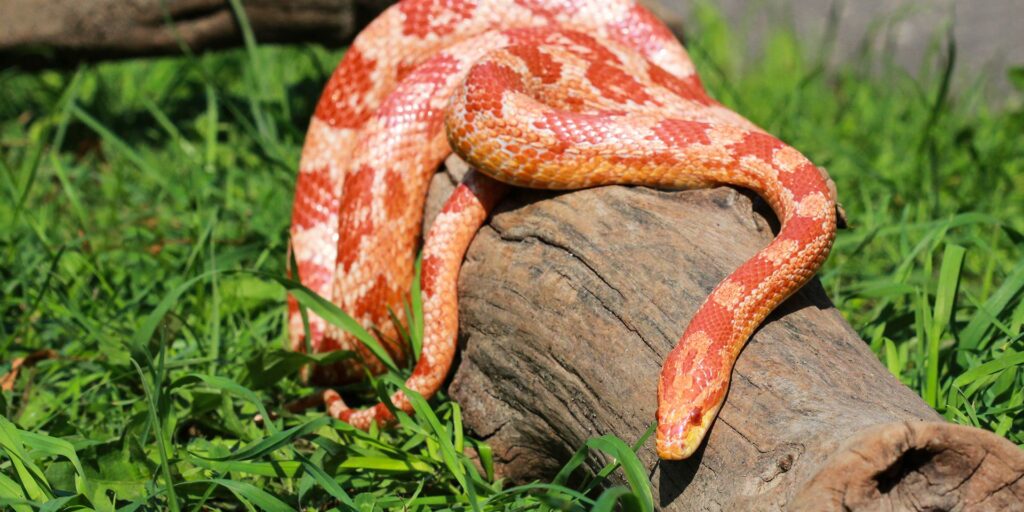
Corn snakes, like all reptiles, are ectothermic and rely on external heat sources to regulate their body temperature, making proper thermal gradients essential for their health.
The enclosure should feature a temperature gradient ranging from approximately 75-82°F on the cool side to 85-90°F at the warm end, allowing the snake to thermoregulate by moving between areas.
This gradient can be achieved using under-tank heating pads controlled by thermostats, ceramic heat emitters, or radiant heat panels mounted above the enclosure.
Heat rocks should be avoided as they can cause serious burns. For accurate temperature monitoring, use at least two thermometers—one at the warm end and one at the cool end—with digital thermometers with probes providing more reliable readings than adhesive strip thermometers.
During nighttime hours, temperatures can safely drop by a few degrees across the entire enclosure, mimicking natural temperature fluctuations and potentially stimulating natural behaviors.
Managing Humidity Levels
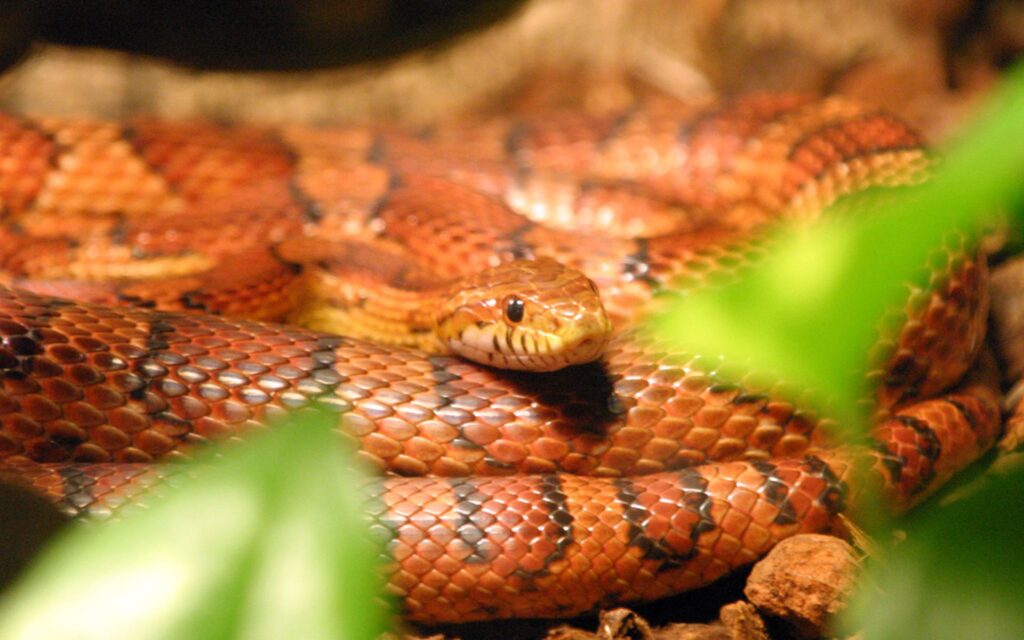
While corn snakes don’t require the high humidity levels needed by tropical species, maintaining proper moisture in their environment is still crucial for healthy shedding and respiratory function.
The ideal humidity range for corn snakes is between 40-50% for everyday maintenance, with temporary increases to 60-70% during shedding periods. Humidity can be monitored using hygrometers placed at different locations within the enclosure.
For everyday humidity maintenance, a water bowl sized appropriately for the snake (large enough for soaking but not so deep as to pose a drowning risk) placed on the cooler side of the enclosure provides ambient moisture.
During shedding, humidity can be increased by misting one side of the enclosure lightly, adding damp sphagnum moss in a hide box (often called a “humid hide”), or placing slightly damp paper towels in a covered container with ventilation holes.
Avoid creating a consistently damp environment, as this can lead to scale rot and respiratory infections in corn snakes.
Essential Hiding Spots

Hiding spots are perhaps the most critical aspect of a corn snake’s habitat after appropriate temperature regulation, as they provide security and help reduce stress.
At minimum, provide two hide boxes—one on the warm end and one on the cool end of the enclosure—allowing your snake to feel secure while still being able to thermoregulate effectively.
Commercial hide boxes come in various designs, from naturalistic rock or log formations to simple plastic containers; the most important factor is that they’re snug enough for the snake to feel secure (with their body touching the sides when curled inside) but large enough to accommodate the entire snake comfortably.
Many keepers create DIY hides using plastic food containers or flower pots with entrance holes cut into them, which work just as effectively as commercial options.
For shedding periods, a third “humid hide” containing damp sphagnum moss provides an environment that facilitates easier skin removal.
Position hides with the openings facing away from high-traffic areas of the room to increase the snake’s sense of security.
Climbing Opportunities and Enrichment
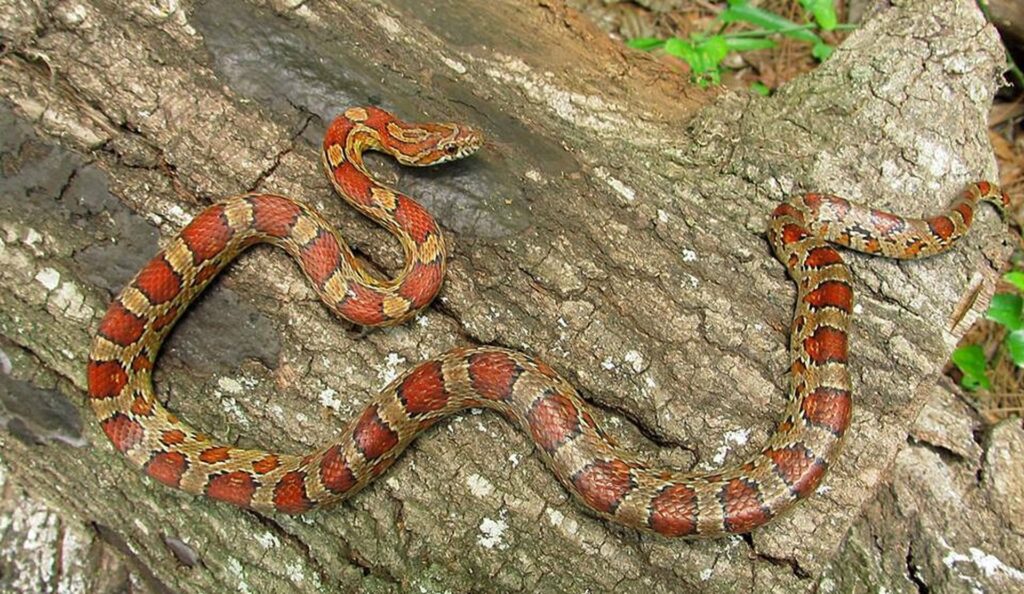
Although not as arboreal as some snake species, corn snakes do climb in the wild and appreciate having vertical elements in their enclosures.
Secure branches, cork bark pieces, or commercially available reptile vines provide opportunities for exercise, exploration, and natural behaviors. When selecting climbing items, ensure they’re sturdy enough to support your snake’s weight and are securely positioned to prevent collapse that could injure your pet.
Beyond climbing structures, environmental enrichment can include varying terrain with rock formations (securely arranged to prevent collapse), artificial or live plants for additional hiding spots, and occasionally rearranging enclosure elements to provide novel experiences.
Some keepers create activity centers by clustering several features together—perhaps a sturdy branch positioned near a hide entrance and a water bowl—creating a complex environment that encourages exploration.
Remember that while corn snakes aren’t as active as mammals, environmental complexity contributes significantly to their psychological well-being.
Lighting Requirements
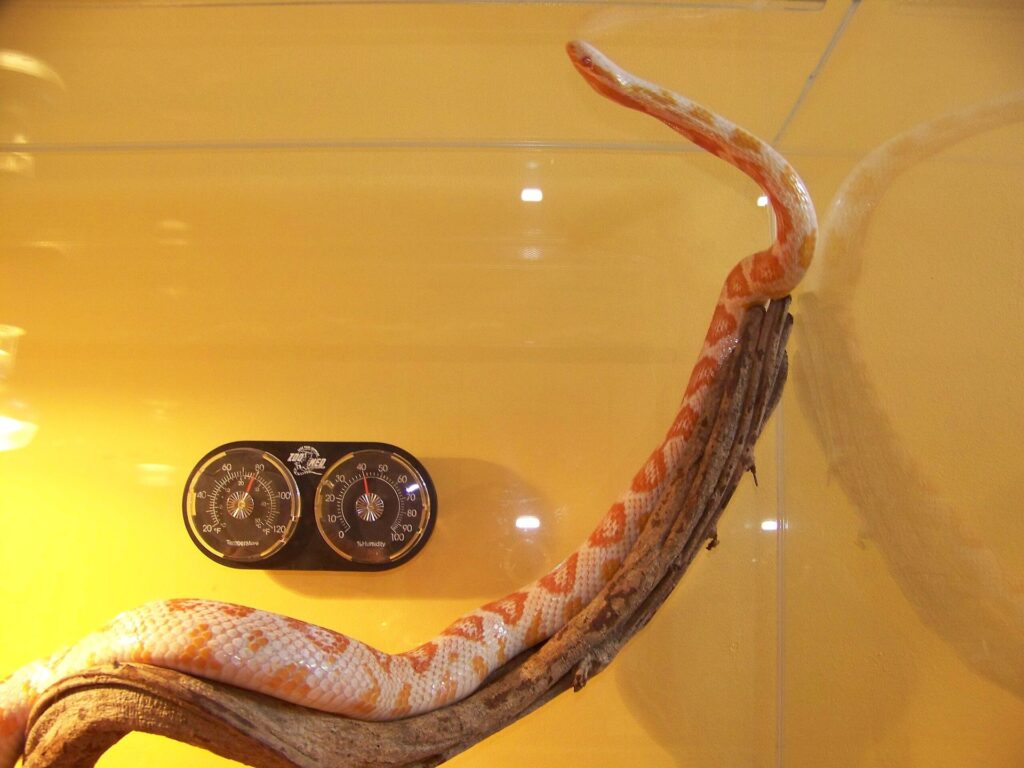
Unlike many other reptiles, corn snakes don’t have specific UVB lighting requirements since they’re primarily crepuscular (active at dawn and dusk) and get vitamin D3 through their diet rather than UVB synthesis.
However, providing a regular day/night cycle with ambient lighting is important for maintaining natural behavioral rhythms.
A simple room light or low-wattage LED designed for reptile enclosures can provide this day/night distinction, ideally controlled by a timer set for 12-14 hours of light in summer and 10-12 hours in winter.
Some keepers choose to provide low levels of UVB lighting anyway, as emerging research suggests it may offer benefits beyond vitamin D3 synthesis, potentially improving overall well-being and encouraging more natural behaviors.
If using UVB, choose a low-output bulb (2-5%) and ensure it doesn’t raise enclosure temperatures beyond the recommended range.
Avoid colored “night lights,” as they can disrupt natural sleep patterns; if nighttime heating is required, use heat sources that don’t emit light, such as ceramic heat emitters or heat pads.
Water and Hydration Needs

A clean water source is essential for corn snakes, contributing to both hydration and ambient humidity. Provide a water bowl large enough for the snake to soak in (particularly important during shedding periods) but not so deep that it creates drowning hazards for smaller individuals.
Position the water dish on the cooler side of the enclosure to prevent excessive evaporation and maintain water quality longer. Water should be changed at least every other day, with the bowl thoroughly cleaned to prevent bacterial growth or algae formation.
Some corn snakes have a habit of defecating in their water dishes, necessitating immediate cleaning when this occurs.
In addition to their water bowl, corn snakes obtain moisture from their environment and their prey items, with appropriately sized rodents providing significant hydration.
During shedding periods, ensuring adequate hydration becomes even more critical, and some keepers provide shallow lukewarm water baths in a separate container to help facilitate difficult sheds.
Creating a Bioactive Setup
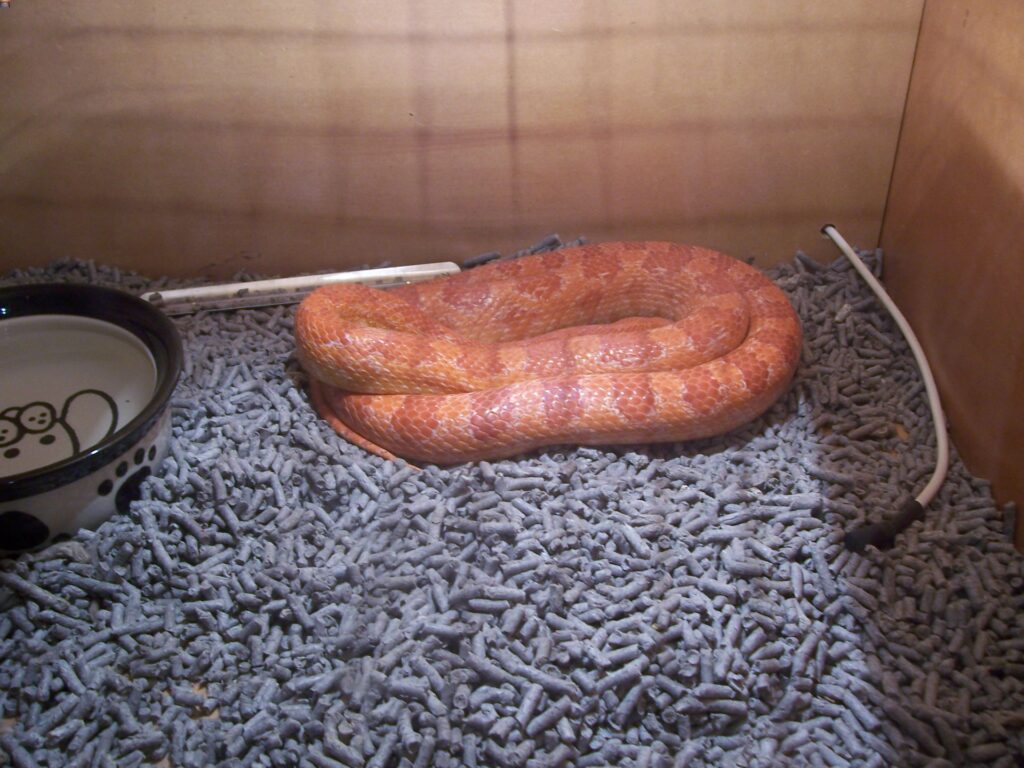
Advanced keepers may consider creating a bioactive enclosure, which incorporates living plants and a cleanup crew of invertebrates to create a self-sustaining mini-ecosystem.
A successful corn snake bioactive setup typically includes a drainage layer of lightweight expanded clay pellets, a substrate barrier like landscaping fabric, and a deep substrate mix containing soil, coco fiber, orchid bark, and sand.
Plant options include drought-tolerant species such as pothos, snake plants, bromeliads, and certain succulents that can withstand the occasional disruption from a curious snake.
The cleanup crew might include isopods (such as dwarf white isopods) and springtails that consume waste, preventing mold and breaking down organic matter.
Bioactive setups require more initial investment and planning but can reduce maintenance in the long run while providing an enriching, naturalistic environment.
These systems must still meet the thermal requirements of corn snakes, which may require creative solutions for incorporating heat sources without disrupting the bioactive elements.
Cleaning and Maintenance Schedules
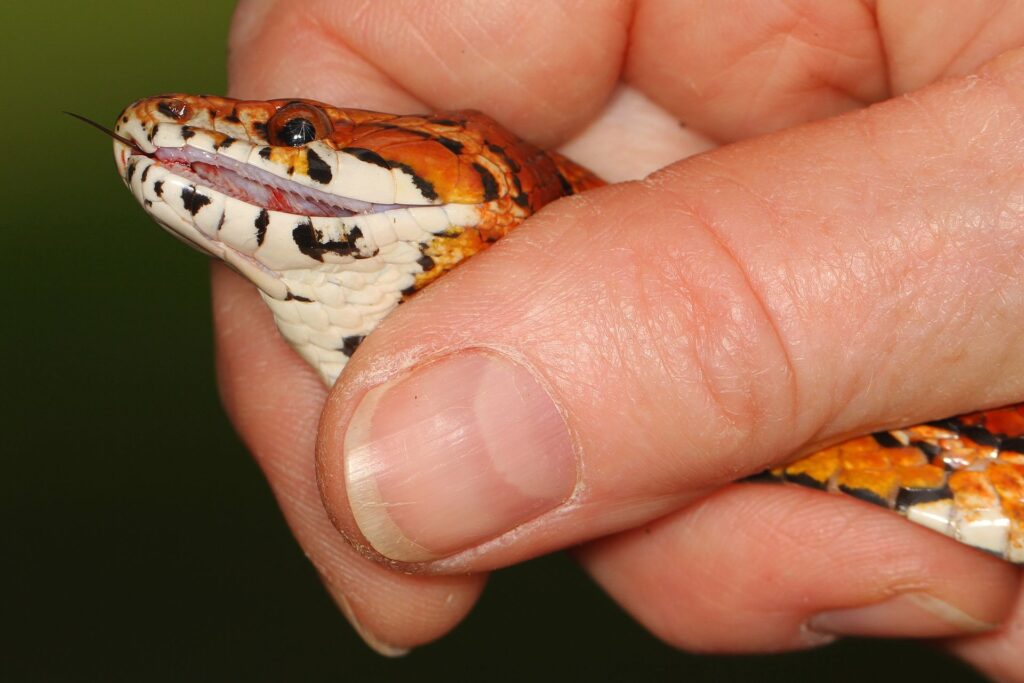
Regular maintenance ensures your corn snake’s habitat remains healthy and hygienic, preventing disease and odor issues. Daily tasks include removing any feces, urates, or shed skin, refreshing water, and checking temperature and humidity levels.
Weekly maintenance should involve more thorough spot-cleaning of the substrate, wiping down glass or plastic surfaces with reptile-safe disinfectant, and checking that all heating and lighting equipment is functioning properly.
Every 1-3 months, depending on enclosure size and the snake’s habits, perform a complete substrate change and deep clean of the entire habitat, including all decorations and hiding spots.
During deep cleans, remove your snake to a secure temporary container, discard all substrate, and disinfect the enclosure and all furnishings with a reptile-safe cleaner like F10, chlorhexidine solution, or a diluted bleach solution (1:10 with water) followed by thorough rinsing and complete drying before reintroducing fresh substrate and your snake.
Establish a regular maintenance schedule and keep records of cleaning dates, as well as observations about your snake’s behavior, feeding, and shedding patterns.
Common Habitat Mistakes to Avoid
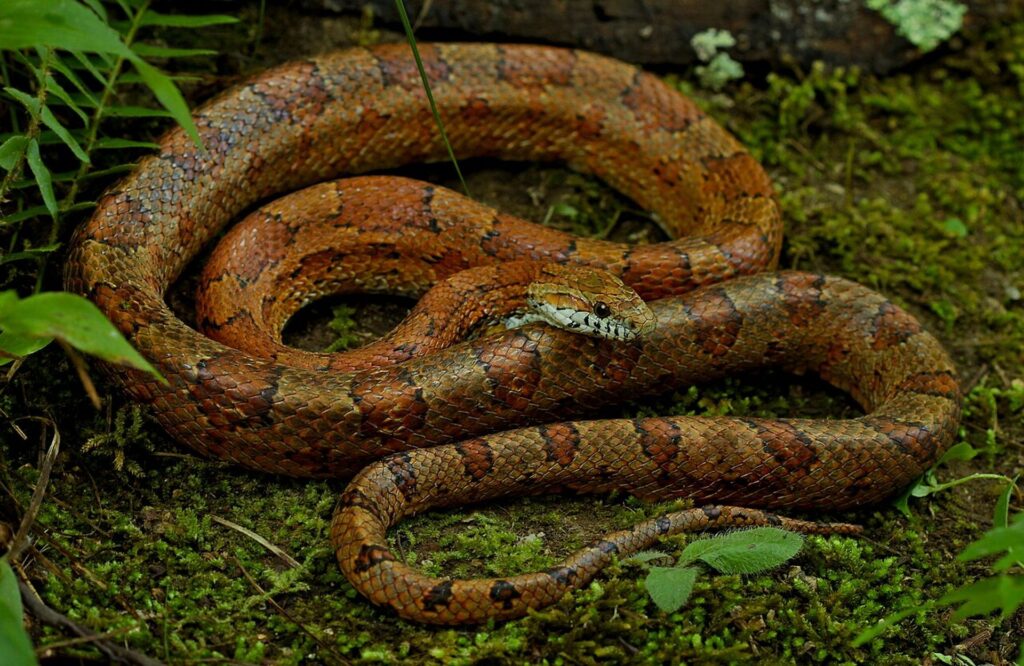
Even experienced keepers can make habitat mistakes that affect corn snake health and well-being.
One of the most common errors is relying on heat rocks or hot spots without providing a proper gradient, forcing snakes to choose between overheating or being too cold rather than allowing natural thermoregulation.
Another frequent mistake is providing insufficient security through inadequate hiding spots or placing the enclosure in high-traffic areas, leading to chronic stress that can manifest as feeding refusal, defensive behavior, or health issues.
Many new keepers underestimate corn snakes’ exceptional escape abilities, using unsecured screen tops or enclosures with small gaps that seemingly couldn’t accommodate a snake’s body.
Inappropriate substrate choices like cedar shavings, newspaper with toxic inks, or calcium sand marketed for reptiles can cause respiratory issues or impaction.
Overhandling is another common issue, particularly with new pets; corn snakes benefit from regular handling to maintain tameness, but sessions should be limited to 10-15 minutes a few times weekly, with longer periods between handlings for newly acquired snakes or individuals showing stress signals.
Monitoring Your Snake’s Health and Behavior
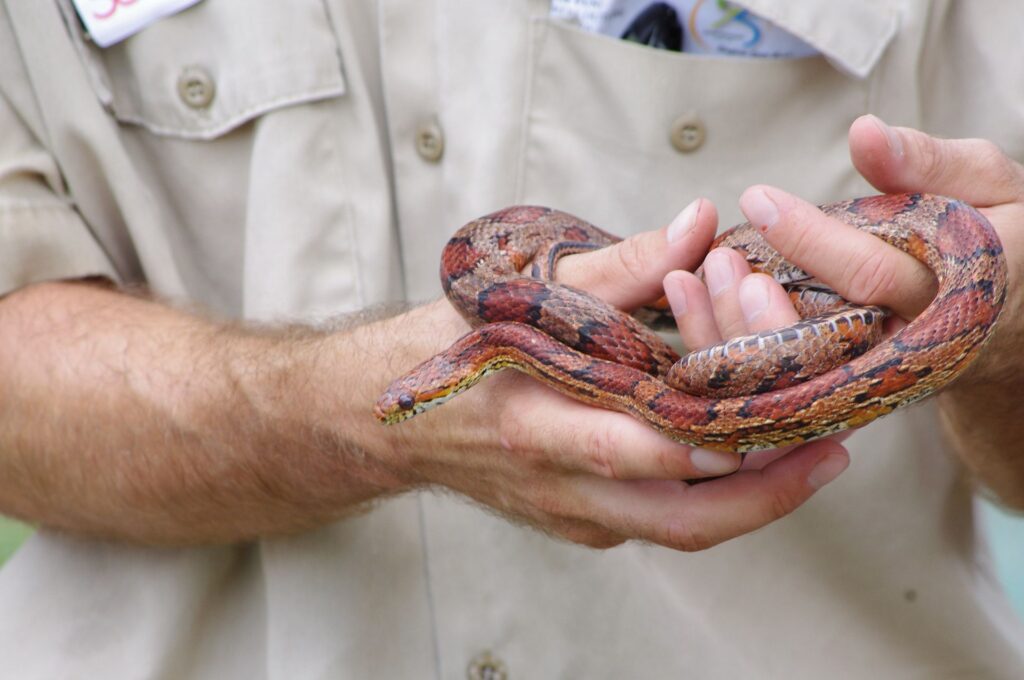
The habitat you create directly influences your corn snake’s health and behavior, making regular observation an essential part of responsible keeping.
A healthy corn snake in an appropriate environment will display normal behaviors including regular exploration (particularly during dawn and dusk hours), willingness to eat, proper shedding, alert responses to movement, and a generally relaxed demeanor when handled.
Signs that habitat parameters may need adjustment include frequent soaking (potentially indicating excessively high temperatures or preparation for shedding), constantly seeking the warm or cool side exclusively (suggesting temperature gradient issues), respiratory symptoms like wheezing or bubbling around the nostrils (often related to excessive humidity or insufficient ventilation), or unusual hiding behavior where the snake remains concealed for extended periods outside of pre-shed phases.
Maintain a log of your snake’s feeding, shedding, weight, and behavior patterns to help identify subtle changes that might indicate developing health issues.
Remember that adjustments to habitat parameters should be made gradually, monitoring your snake’s response to ensure the changes positively affect their well-being.
Conclusion
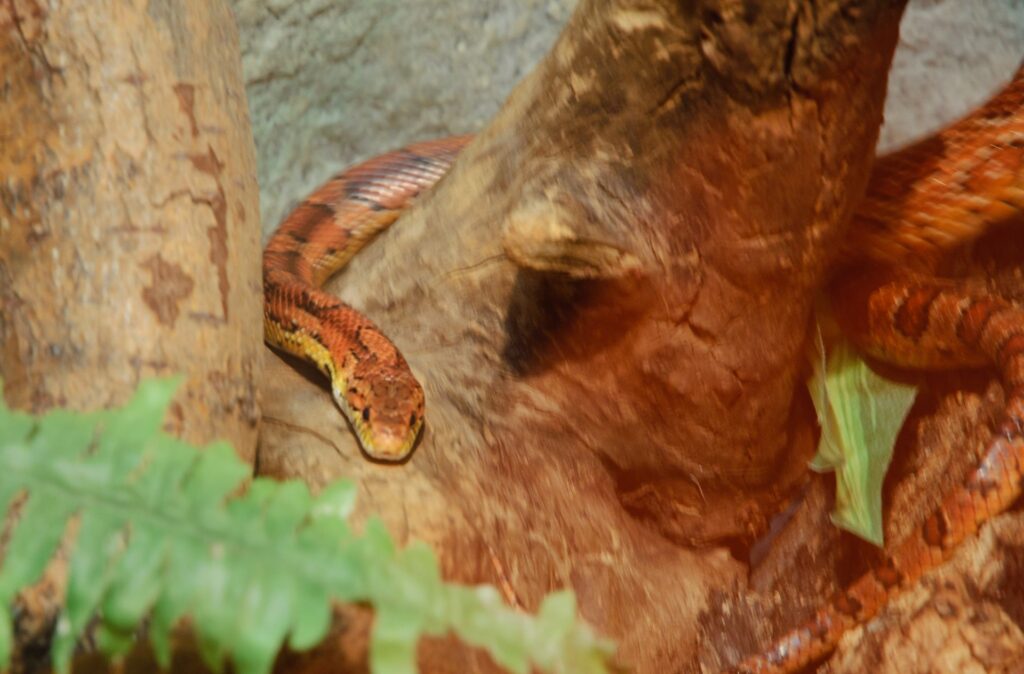
Creating the perfect habitat for your corn snake requires attention to detail and an understanding of their natural history, but the rewards of seeing your reptile thriving in a well-designed environment make the effort worthwhile.
By providing appropriate temperatures, humidity, substrate, hides, and enrichment, you’re setting the foundation for a healthy, active snake that may be your companion for 15-20 years or more.
Remember that habitat needs may evolve as your snake grows, and staying informed about advances in reptile husbandry ensures you’ll continue providing the best possible care throughout your corn snake’s life.
With proper habitat management and regular observation, your corn snake can display its natural behaviors and vibrant personality, making it a fascinating pet for years to come.

